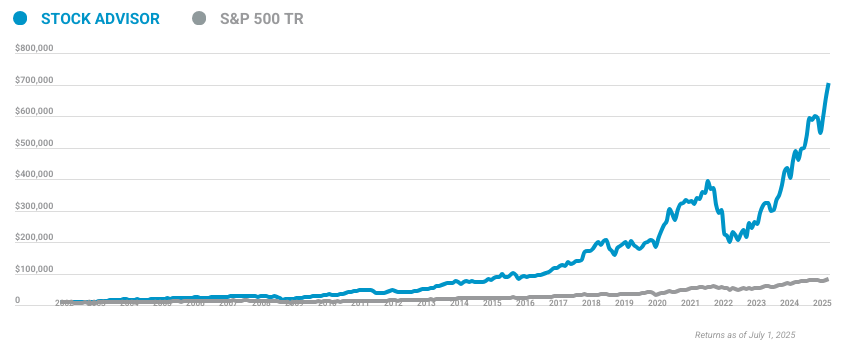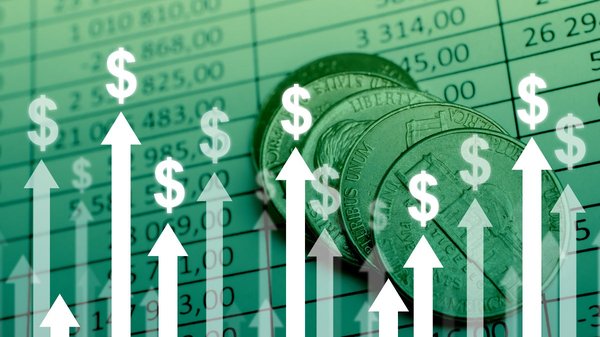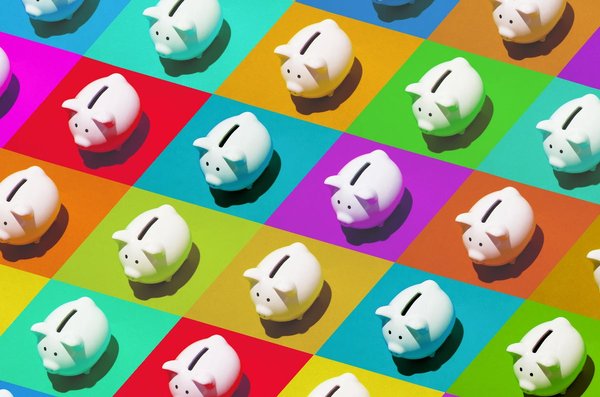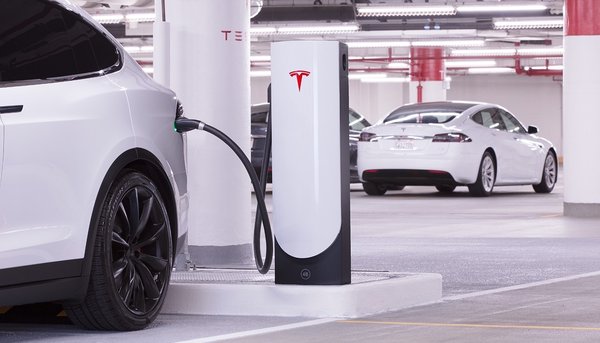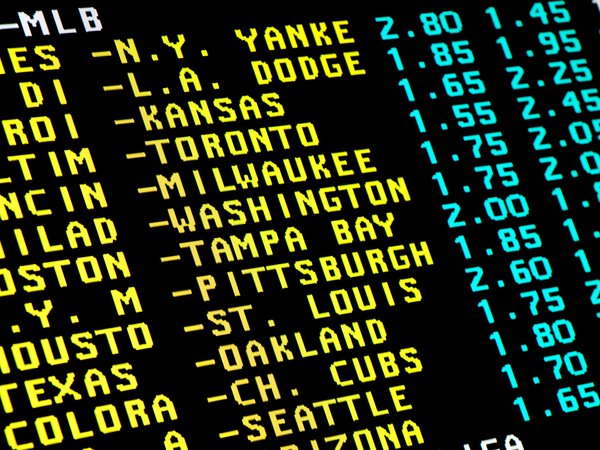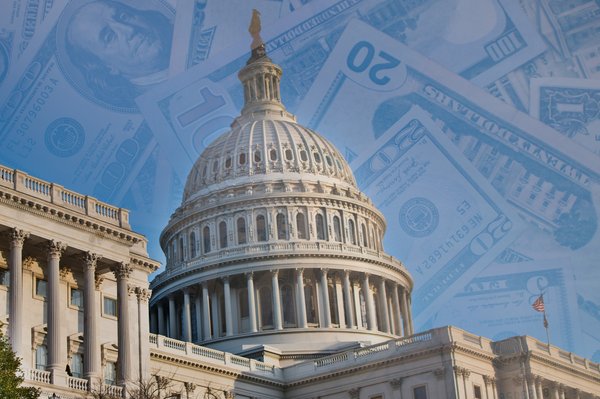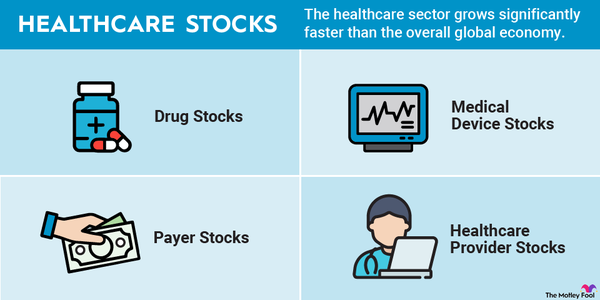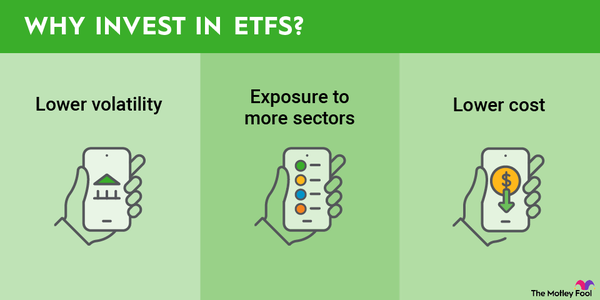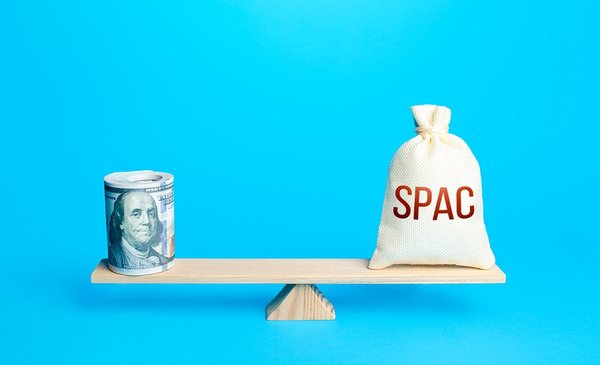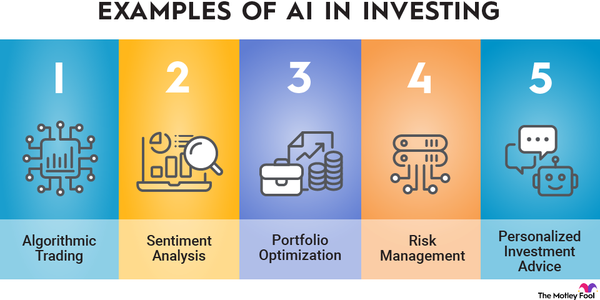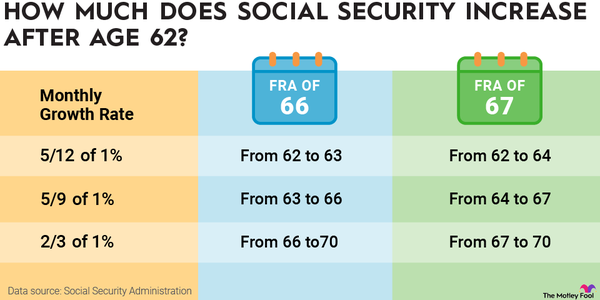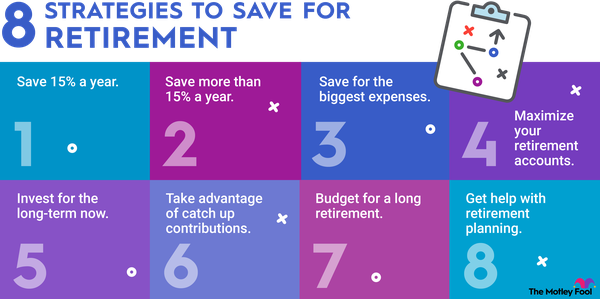Student loan debt totals $1.77 trillion and is held by about 42.8 million Americans. Roughly two-thirds of student loan borrowers pay up to $300 a month.
Those are eye-opening numbers. Student loan debt is consistently the second-largest type of debt behind a mortgage and can be a significant drag on individual finances, particularly for women and people of color.
Moreover, 16% of borrowers are behind on their loan repayments, which can have a negative impact on credit scores. And more students each year are taking out loans to pay for tuition.
Student loan policy is in flux. In 2023, payments on federal student loans restarted after a pause during the COVID-19 pandemic. That same year, the Supreme Court rejected an effort by the Biden administration at broad student loan forgiveness. The Biden administration then focused on providing targeted forgiveness for specific groups. It remains to be seen how the incoming Trump administration will approach student loan debt.
For more student loan debt statistics, read on.
Total student loan debt
Total student loan debt: $1.77 trillion
Student loan debt totaled $1.77 trillion as of the third quarter of 2024, per the Federal Reserve.
This includes both federal and private student loans. Federal student loan debt makes up more than 90% of all student loan debt.
Student loan debt by year
In the first quarter of 2006, there was roughly $481 billion in student loan debt. By the middle of 2012, that number had doubled as student loan debt ballooned in the late 2000s and early 2010s.
From 2006 to 2023, student loan debt expanded by $1.3 trillion -- roughly 260%.
Student loan debt has grown by roughly 2% each quarter from 2006 to the start of 2023. Student loan debt declined in the second, third, and fourth quarters of 2023 -- the longest consecutive period of student loan decreases since at least 2006.
Total outstanding student loan debt rose in the first and third quarters of 2024.
Average monthly student loan payment
Sixty-five percent of those who make student loan payments pay up to $299 a month, according to data collected by the Federal Reserve in 2023.
Twenty-one percent pay less than $100 a month, 26% pay between $100 and $199, and another 18% pay between $200 and $299.
Only 4% have student loan payments of over $1,000 a month.
Compared to the average American’s monthly expenses, many are paying more than they put aside for retirement or spend on education every month.
Average federal student loan debt
Average federal student loan debt: $38,375
The average federal student loan debt held by Americans in the fourth quarter of 2024 was $38,375, based on data from the U.S. Department of Education.
The average level of federal student loan debt has grown by roughly 1% per quarter since 2013.
Average federal student loan debt has decreased in 6 of the past 12 quarters and has risen overall. The current average student loan debt of $38,375 is a record high.
Total federal student loan debt: $1.6 trillion
Total federal student loan debt stands at $1.64 trillion, per the Department of Education.
Federal student loan debt has grown by 1.07% per quarter on average since 2014.
From the second quarter of 2020 through the second quarter of 2023, when the Department of Education eliminated interest and allowed borrowers to pause payments, the average growth rate of federal student loan debt slowed to 0.64% per quarter.
Federal student loan debt peaked in the second quarter of 2023 at $1.64 trillion.
Average federal student loan debt by state
Residents of Washington, D.C., have the highest average federal student loan debt balance, with $54,468 outstanding per borrower.
North Dakota residents have the lowest student loan debt, with $29,148 per borrower on average.
California, Texas, and Florida have the most outstanding federal student loan debt overall, which is no surprise given that those are the most populous states and home to the most federal student loan borrowers. California residents owe $149 billion in student loan debt, Texas residents owe $129 billion, and Florida residents owe $105 billion.
Wyoming, Alaska, and Vermont have the fewest federal student loan debt borrowers and the least outstanding federal student loan debt overall.
Average student loan debt by age
Americans older than 35 have the most student loan debt on average, while Americans 24 and younger have the least.
Those in the 35-to-49 age group have the most student loan debt outstanding, nearly $647 billion. Of that age group, 14.6 million have student loans, the second-highest total among these age groups.
Here’s how total outstanding debt and the number of student loan borrowers break down by age group:
- 24 and younger: $96 billion federal student loan debt outstanding among 6.8 million borrowers.
- 25 to 34: $487 billion federal student loan debt outstanding among 14.7 million borrowers.
- 35 to 49: $647 billion federal student loan debt outstanding among 14.6 million borrowers.
- 50 to 61: $290 billion federal student loan debt outstanding among 6.2 million borrowers.
- 62 and older: $122 billion federal student loan debt outstanding among 2.8 million borrowers.
Older Americans have more student loan debt, on average, than younger Americans because they’re more likely to have taken out additional and more expensive loans for postgraduate education.
Over time, average student loan debt per borrower has steadily increased for Americans older than 35 but has remained relatively stable for younger borrowers.
Federal student loan debt by loan type
There are three types of federal student loans: Direct Loans, for which there is more than $1.4 trillion in outstanding debt; Federal Family Education Loans (FFEL), for which there is $165 billion in outstanding debt; and Perkins Loans, for which there is $3.2 billion in outstanding debt.
| Time Period | Direct Loans (billions) | Federal Family Education Loans (FFEL) (billions) | Perkins Loans (billions) | Total Outstanding Federal Student Loan Debt (billions) |
|---|---|---|---|---|
| 2024 Q4 | $1,470.10 | $165.40 | $3.20 | $1,638.60 |
Federal Direct Loans are government-funded student loans offered to undergraduates, graduate students, and parents of college students. These loans can be subsidized or unsubsidized, and of the three categories above, Direct Loans are the only type that still exists.
FFEL loans were once issued under the Federal Family Education Loan program and were private ones subsidized and guaranteed by the federal government. That program ended in 2010. Perkins Loans were government loans that featured a lengthy grace period and a low fixed interest rate, but they stopped being issued in 2017.
Total private student loan debt
Total private student loan debt: $133 billion
Total private student loan debt totaled $133.43 billion as of the end of March 2024, according to Enterval Analytics. That accounts for 7.6% of all outstanding student loan debt. That’s up from $130 billion, roughly 7.5% of all outstanding debt, measured at the end of September 2023.
Private loans don't come with the same protections as federal loans, making it easier for borrowers to fall behind. They also aren’t eligible for forgiveness via government action.
Many private lenders will offer to consolidate federal student loans at potentially lower rates. Doing so transfers federal loans into private loans, eliminating protections and making them ineligible for potential federal student loan forgiveness or other types of relief.
Average student loan debt by race
There is an apparent racial disparity when it comes to student loans. Black Americans carry more student loan debt on average, are more likely to have student loans, and are more likely to have student loan debt of more than $25,000 compared to other Americans.
Black Americans also have the most student loan debt, carrying $26,000 on average, according to the Federal Reserve.
White Americans hold $25,000 in student loan debt on average, while Hispanic Americans have $13,000. Other races have an average of $25,000 of student loan debt.
| Median Student Loan Debt | |||
|---|---|---|---|
| Black, Non-Hispanic | Hispanic | Other | White, Non-Hispanic |
| $26,000 | $13,000 | $25,000 | $25,000 |
In addition, a higher percentage of Black Americans have student loans than any other race. Thirty-six percent of Black Americans have student loans compared to 20% of white Americans and 15% of Hispanic Americans.
| Percent Holding Student Loan Debt | |||
|---|---|---|---|
| Black, Non-Hispanic | Hispanic | Other | White, Non-Hispanic |
| 36% | 15% | 23% | 20% |
Black Americans are also more likely than other Americans to have at least $25,000 worth of student loan debt. Fifty-seven percent of Black Americans have more than $25,000 in student loan debt compared to 47% of Americans overall.
| Percent of Student Loan Debt Holders With at Least $25,000 of Debt | ||||
|---|---|---|---|---|
| Black, Non-Hispanic | Hispanic | Asian | White, Non-Hispanic | All |
| 57% | 39% | 52% | 45% | 47% |
Average student loan debt by gender
Women hold an average of $31,276 in undergraduate student loan debt one year after graduation, while men hold roughly $2,000 less, according to the American Association of University Women.
| Cumulative Debt on Undergraduate Loans One Year After Graduation | |
|---|---|
| Women | $31,276 |
| Men | $29,270 |
Breaking the numbers down by gender and race puts the wealth divide in even starker terms.
Black or African American women have an average of $41,466 in undergraduate student loan debt one year after graduation, more than any other group and more than $10,000 more than men.
American Indian or Alaska Native women and Pacific Islander/Hawaiian women also have more than $35,000 in student loan debt on average one year after finishing their undergraduate degree.
| Cumulative Debt on Undergraduate Loans One Year After Graduation | ||
|---|---|---|
| American Indian or Alaska Native women | $36,184 | |
| Asian women | $27,607 | |
| Black or African American women | $41,466 | |
| Hispanic or Latina women | $29,302 | |
| Pacific Islander/Hawaiian women | $38,747 | |
| White women | $33,852 | |
| All women | $31,276 | |
| All Men | $29,270 |
Women being saddled with more student debt than men is made more difficult by the persistent gender income gap. In short, women with more student loan debt likely have higher monthly student loan payments but less income with which to make those payments compared to men.
Student loan delinquency rates
As of the third quarter of 2024, 0.5% of student loan debt was already 90 days or more past due or seriously delinquent. During that quarter, 0.9% of student loan debt became 30 days or more past due, and 0.77% became seriously delinquent.
The amount of student loan debt in delinquency and the rate at which debt newly entered delinquency each quarter plummeted in the second quarter of 2020, when the federal government paused repayments and interest accrual. The percentage of student loan debt in serious delinquency dropped significantly again in the fourth quarter of 2022 as the Fresh Start program kicked in, reclassifying previously defaulted loans as current.
Since then, the percentage of student loan debt that’s seriously delinquent has fallen an average of 7% each quarter, while flows into delinquency and serious delinquency have declined by 3% and 4% on average each quarter, respectively.
16% of those with student loans are behind on their payments
Sixteen percent of Americans with student loans are behind on their payments, putting them at risk of accumulating interest and lowering their credit scores.
Those with lower incomes and less education are more likely to be behind on their payments.
| Family Income | Percent behind on payments |
|---|---|
| <$25,000 | 24% |
| $25,000 to $49,999 | 24% |
| $50,000 to $99,999 | 15% |
| $100,000 or more | 7% |
| Education | Percent behind on payments |
|---|---|
| Some college or technical degree | 28% |
| Associate’s degree | 22% |
| Bachelor's degree | 7% |
| Graduate degree | 7% |
| Race/ethnicity | Percent behind on payments |
|---|---|
| White | 10% |
| Black | 23% |
| Hispanic | 27% |
| Asian | 13% |
| Overall | 16% |
Missing a student loan payment immediately makes the loan delinquent. If the loan remains delinquent for 90 days, the loan servicer will contact major credit bureaus, and credit scores may be negatively impacted.
If federal loans go without payment for more than 270 days, the debtor is considered to be in default and can lose eligibility for federal aid and be open to legal action.
57% of Americans would use savings from student loan forgiveness to pay off other debt
Fifty-seven percent of Americans say they would use savings from forgiveness to pay off debt.
Twenty-six percent say they would put savings from federal student loan forgiveness toward other savings. Ten percent say they would put savings toward a home purchase, and 7% say they would spend their savings on other things.
Older Americans are more likely to put savings from loan forgiveness toward paying off debt, while younger Americans are more likely to put those savings aside for a home purchase.
Expected Main Use of Savings From Potential Student Loan Forgiveness
| Age | Pay off debt | Save for home purchase | Save for other things | Spend it on other things |
|---|---|---|---|---|
| 18 to 29 | 49% | 19% | 28% | 4% |
| 30 to 44 | 56% | 12% | 25% | 7% |
| 45 to 59 | 67% | 4% | 22% | 8% |
| 60+ | 56% | 4% | 29% | 11% |
| Race/Ethnicity | Pay off debt | Save for home purchase | Save for other things | Spend it on other things |
|---|---|---|---|---|
| White | 56% | 11% | 27% | 8% |
| Black | 62% | 11% | 21% | 6% |
| Hispanic | 54% | 12% | 27% | 6% |
| Asian | 51% | 11% | 29% | 9% |
| Overall | 57% | 10% | 26% | 7% |
Are student loans worth it?
Most Americans say the benefits of higher education outweigh the costs
Fifty-two percent of Americans who attended college say the financial benefits of doing so outweigh the costs, according to the Federal Reserve. Twenty percent said the costs were not worth the financial benefits, and the other 28% said the costs and benefits are roughly the same.
Views on whether the financial benefits of higher education outweigh the costs vary by education level and age.
Younger and less-educated Americans are less likely to see the financial benefits of attending higher education as being greater than the costs.
Still, nearly two-thirds of Americans with a bachelor’s degree or higher consider their education to be worth the cost. The majority of Americans older than 60 with an associate’s degree or higher believe the expense of their education was worth it.
Percent Who Believe the Lifetime Financial Benefits of Their (Current/Most Recent) Educational Program Outweigh Its Costs
| Degree type | 18 to 29 | 30 to 44 | 45 to 59 | 60+ | All respondents |
|---|---|---|---|---|---|
| Associate's degree | 37% | 32% | 44% | 56% | 43% |
| Bachelor's degree | 55% | 55% | 67% | 75% | 63% |
| Graduate or professional degree | 65% | 64% | 77% | 85% | 75% |
| Doctoral degree | 45% | 79% | 80% | 91% | 80% |
Americans who are still paying off their student loans are less likely to think the financial benefits of their education have been worth the costs. On the other hand, more than 50% of Americans who have either paid off their student loans or did not have any to begin with think the cost of their education was worth the financial benefits.
A significant disparity exists in whether the cost of education is seen as being worth the benefits when grouping Americans by the type of college they attended.
Those who attended a for-profit college are much less likely than Americans who attended a public college or private nonprofit college to think the cost was worth the lifetime financial benefits. Just 31% of those who attended a for-profit college believe the financial benefits were worth the cost, while more than half of those who attended public and private nonprofit colleges see the costs as being worth the financial benefits.
Percent Who Believe the Lifetime Financial Benefits of Their (Current/Most Recent) Educational Program Outweigh Its Costs
| Loan Status | |
|---|---|
| With loans | 39% |
| Paid off loans or no debt ever | 55% |
| Type of College Attended | |
|---|---|
| Public school | 53% |
| Private nonprofit | 58% |
| For-profit | 31% |
Loan forgiveness and debt relief
What’s next for student loan forgiveness and debt relief?
Despite the Supreme Court blocking the Biden administration's initial attempt at broad federal student loan debt forgiveness, the administration has forgiven over $175 billion worth of student loan debt for more than 4.8 million borrowers. Whether Biden and his team will take more sweeping action before the end of their term remains to be seen.
President-elect Donald Trump has criticized student loan forgiveness. Media reports suggest his transition team is looking at shutting down the Biden administration’s efforts to make student loan debt relief more easily accessible, although some policies, such as the SAVE Plan, might be more difficult to roll back than others.
Sources
- American Association of University Women (2021). “Deeper in Debt: 2021 Update.”
- Congressional Research Service (2022).” Federal Student Loan Debt Cancellation: Policy Considerations.”
- Department of Education (2024). “Federal Student Loan Portfolio.”
- Enterval Analytics (2024). “Private Student Loan Semi Annual Report September 2023.”
- Federal Reserve (2023). “Survey of Consumer Finances.”
- Federal Reserve (2024). “Economic Well-Being of U.S. Households in 2024.”
The Motley Fool has a disclosure policy.

